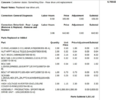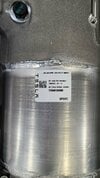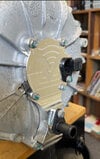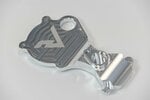There has been a recent rear drive unit/large drive unit innovation/modification from both Tesla and QC Charge for 2012-2014 Tesla Model S (all) and 2015-2020 Tesla Model S and X, Performance versions only, rear drive motor only.
Tesla calls it their new "U" seal delete manifold version. QC Charge calls it coolant delete. Both are to mitigate the leaking seal issue with these drive units.
Are both innovations/modifications the same? My understanding is they are in that the coolant that is provided to the rotor/stator is bypassed so that the coolant goes directly to the 3 x ICBTs in the inverter and then through the gear box heat sink, then out.
Pros/cons? While the leaking seal issue is "bypassed", would then the rotor/stator risk failing due to no cooling? Or is that risk so minimal to offset the leaking seal issue?
Here's QC Charge link COOLANT DELETE Tesla Large Drive Unit
Pics are Tesla's invoice and drive unit label for similar revision.


Tesla calls it their new "U" seal delete manifold version. QC Charge calls it coolant delete. Both are to mitigate the leaking seal issue with these drive units.
Are both innovations/modifications the same? My understanding is they are in that the coolant that is provided to the rotor/stator is bypassed so that the coolant goes directly to the 3 x ICBTs in the inverter and then through the gear box heat sink, then out.
Pros/cons? While the leaking seal issue is "bypassed", would then the rotor/stator risk failing due to no cooling? Or is that risk so minimal to offset the leaking seal issue?
Here's QC Charge link COOLANT DELETE Tesla Large Drive Unit
Pics are Tesla's invoice and drive unit label for similar revision.







